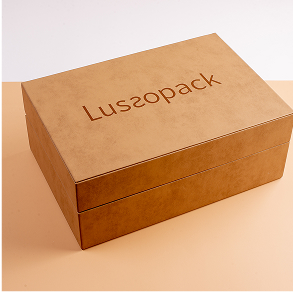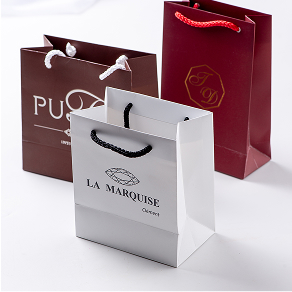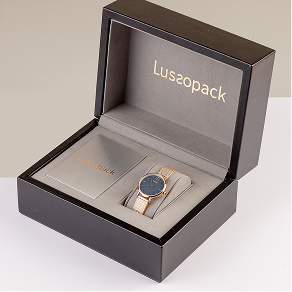In our global economy, products travel across borders and continents, reaching diverse markets and consumers. The packaging of these products is adorned with various symbols, each conveying critical information about the product inside. In the vast world of global commerce, understanding the signs on packaging and their meaning is not just beneficial; it’s essential. The international packaging symbols serve as a universal language, ensuring that products are used safely and efficiently, regardless of the geographical borders they cross or the languages spoken by their handlers and consumers. This guide aims to demystify these package symbols meaning, providing you with the knowledge to navigate the complex world of international packaging.
Why are International Packaging Symbols Important?
The first step in choosing the right packaging materials is to consider the features of your product, such as its size, shape, weight, fragility, and shelf life. These factors will determine the type and amount of protection your product needs, as well as the dimensions and design of your packaging. For example, if your product is bulky, heavy, or fragile, you may need sturdy cardboard boxes, foam inserts, or bubble wrap to cushion it. If your product is perishable, you may need special materials that can preserve its freshness, such as vacuum-sealed bags, insulated containers, or ice packs.
Compare different material options

The common packaging symbols you see, such as the glass and fork indicating food-safe materials or the flame over a circle denoting oxidizing substances, are not arbitrary. They are meticulously designed to enhance consumer safety by providing at-a-glance information about the contents of the packaging. For instance, international packaging symbols indicating temperature limitations help preserve the integrity of perishable items, while toxicity symbols warn of potential hazards, ensuring that products are stored and used correctly.
The international packaging symbols meaning varies across different categories, including handling, recycling, hazardous materials, and more. For manufacturers and exporters, the use of international packaging symbols is a gateway to global markets. Compliance with these symbols is often a requirement for international trade, ensuring that products meet global standards for safety and environmental protection. For consumers, these symbols on cardboard boxes help make informed decisions regarding their purchases’ sustainability and environmental impact. Businesses, on the other hand, can ensure compliance with international regulations, enhance the efficiency of supply chains, and promote responsible consumption. Understanding and adhering to these symbols can significantly reduce legal risks and barriers to entry into foreign markets.
Package Handling Symbols

To prevent damage during transport and storage, package handling symbols provide crucial instructions:
Fragile: The fragile symbol for packaging typically features a broken wine glass or similar delicate item to signify that the contents are easily breakable. This visual cue serves as an immediate alert to handlers to exercise extra caution, ensuring that the item is not subjected to rough handling or heavy pressure that could lead to damage.
This Side Up: Represented by an arrow pointing upwards alongside a box, this symbol designates the correct orientation of the package. It is essential for items that need to be kept in a specific position to prevent spillage, damage, or malfunction, guiding handlers to maintain the package’s upright position during transport and storage.
Keep Dry: This symbol, often depicted as an umbrella over a box or raindrops with a diagonal line through them, warns against moisture exposure. It is crucial for items that are susceptible to water damage, to ensure that the package is stored in dry conditions and away from any liquid sources.
Temperature-sensitive: Indicated by a thermometer, sometimes within a snowflake or sun to denote cold or heat sensitivity, this symbol alerts handlers to keep the package within a specified temperature range. It’s vital for products like food, pharmaceuticals, and chemicals that can degrade or spoil if exposed to unsuitable temperatures.
Do Not Stack: Illustrated with two boxes, one above the other, with a cross through them, this symbol indicates that the package should not have any weight placed on top of it. It prevents crushing, deformation, or damage to items inside that might be sensitive to pressure or weight.
Handle With Care: Often shown as a hand symbol or a silhouette of a person lifting, it signifies that the package requires gentle handling. This symbol is a broad directive that encompasses a range of sensitive items, encouraging handlers to avoid abrupt movements or impacts.
Do Not Use Hand Hooks: This symbol, featuring a hand hook with a cross through it, warns against the use of hooks for lifting. Hooks can puncture, tear, or otherwise damage the package or its contents, and this symbol alerts handlers to use alternative lifting methods.
Clamp Here: Depicted by two opposing half-circles or arrows pointing to an area on the symbol, it specifies the safe points for applying a clamp during lifting. This guidance helps avoid damage to the package or its contents by ensuring clamps are applied in designated areas that can withstand the pressure.
Protect from Direct Sunlight: This symbol, showing a sun with a cross through it or shielded by an umbrella, serves as a warning to keep the package out of direct sunlight. It emphasizes the need for cool, shaded storage to preserve the integrity of the package’s contents.
Do Not Open with Knife: Featuring a knife with a cross through it, this symbol cautions against using sharp instruments to open the package. This symbol helps prevent accidental damage to the items inside, which could occur if a knife cuts too deeply or slips. It’s a reminder to opt for safer methods when unboxing to protect the product and oneself.
Do Not Place Near Magnets: Illustrated with a magnet and a clear cross over it, this warning indicates that magnetic fields could adversely affect the product. For electronic devices, magnetic strips, or items sensitive to magnetism, proximity to magnets could result in malfunction, data loss, or other forms of damage.
Maximum Stacking Height: This symbol, showing a box with a numeral above it, specifies the safe limit for stacking multiple boxes. It aims to prevent accidents and damage from overstacking, which can cause boxes to collapse or crush items beneath.
Each of these cardboard box symbols ensures the product is handled correctly throughout the shipping and storage process to arrive at its final destination in good condition.
Sustainable Packaging Symbols
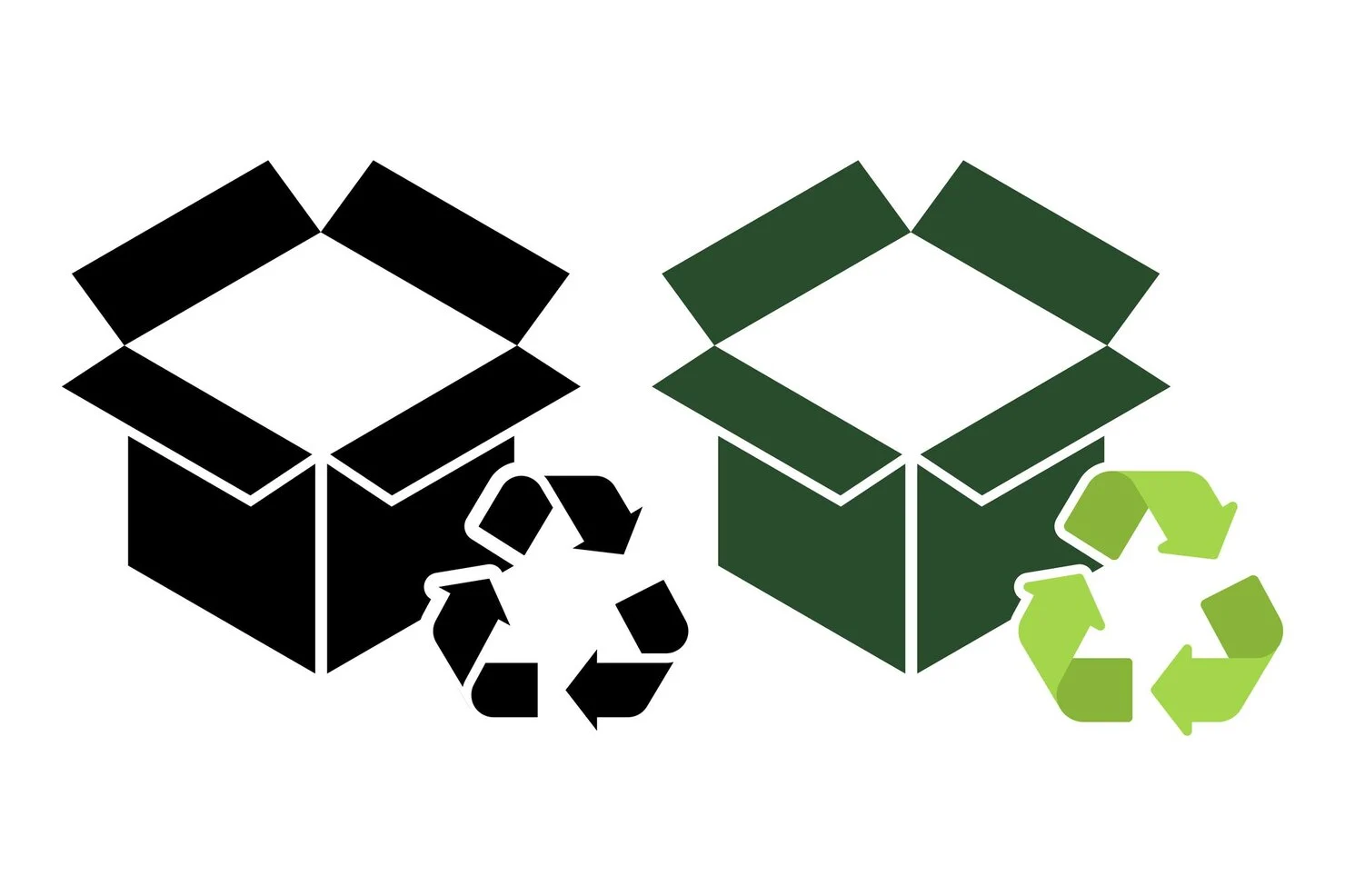
Sustainable packaging symbols are designed to communicate the eco-friendly attributes of packaging to consumers, indicating how they can participate in sustainable practices. These symbols include:
- Recycle sign
The Recycle Sign is universally recognized, featuring three chasing arrows that form a continuous loop. It indicates that the packaging material can be recycled, encouraging consumers to dispose of it in a recycling bin rather than in general waste. This symbol is pivotal in promoting recycling efforts worldwide and guiding consumers toward more sustainable waste management practices.
- Forest Stewardship Council (FSC) Certified
The Forest Stewardship Council (FSC) Certified symbol is characterized by a stylized tree with a check mark, signifying approval and sustainability. The symbol indicates that the packaging material comes from forests managed to high environmental and social standards. This certification ensures sustainable forestry practices, benefiting ecosystems, wildlife, and communities. It guides consumers toward products that support responsible forest management.
- Tidy Man
The Tidy Man symbol, often depicted as a person disposing of litter in a bin, serves as a polite reminder to consumers to keep their environment clean by responsibly disposing of the packaging. It doesn’t necessarily relate to recycling directly but emphasizes the importance of proper waste disposal to prevent littering, supporting broader environmental cleanliness and sustainability goals.
These packing symbols aid consumers in making environmentally conscious decisions and can influence buying behavior towards more sustainable products. They also assist businesses in showcasing their commitment to sustainability and in meeting market demands for eco-friendly packaging options.
Hazard Packing Symbols
Understanding the meaning of international hazard packaging symbols is essential for preventing accidents and ensuring the safe handling and usage of products, guiding individuals in taking the appropriate precautions, including:
- Flammable: Often depicted with a flame symbol, this warns that materials can catch fire easily. The simple, recognizable shape of a flame universally signifies the danger of ignition.
- Corrosive: Symbolized by a substance spilling onto a hand and a metal surface, Indicating that the substance can cause skin burns or corrode metals. The imagery is straightforward, with the acid drop corroding the material below.
- Explosive: Characterized by an exploding bomb symbol, it alerts that the product can explode if exposed to fire, heat, shock, or friction. The iconography of a bomb with a lit fuse is an immediate indicator of explosive potential.
- Toxic: Shown as a skull and crossbones, it highlights substances that can pose serious health risks if inhaled, ingested, or come into contact with skin.
- Environment: Indicates that the substance can cause damage to aquatic life or the environment. This symbol features a dead tree and fish.
- Oxidizing: Shows that the chemical can cause other materials to burn more fiercely or explode. Represented by a flame over a circle.
- Gas Cylinder: Warns that the product is a gas under pressure, which could explode if heated. Depicted as a gas cylinder.
- Health Hazard: Illustrated by a human silhouette with a starburst on the chest, indicating serious health risks. The symbol’s focus on the human figure emphasizes personal danger.
- Irritant/Harmful: Often shown as an exclamation mark, indicating that the substance can cause less severe skin irritation, allergic skin reaction, eye irritation, or respiratory irritation.
- Radioactive: The trefoil radiation symbol warns of radiation hazards. Its distinctive three-bladed design effectively communicates the presence of radioactive material.
Recycling Symbols
The Mobius Loop
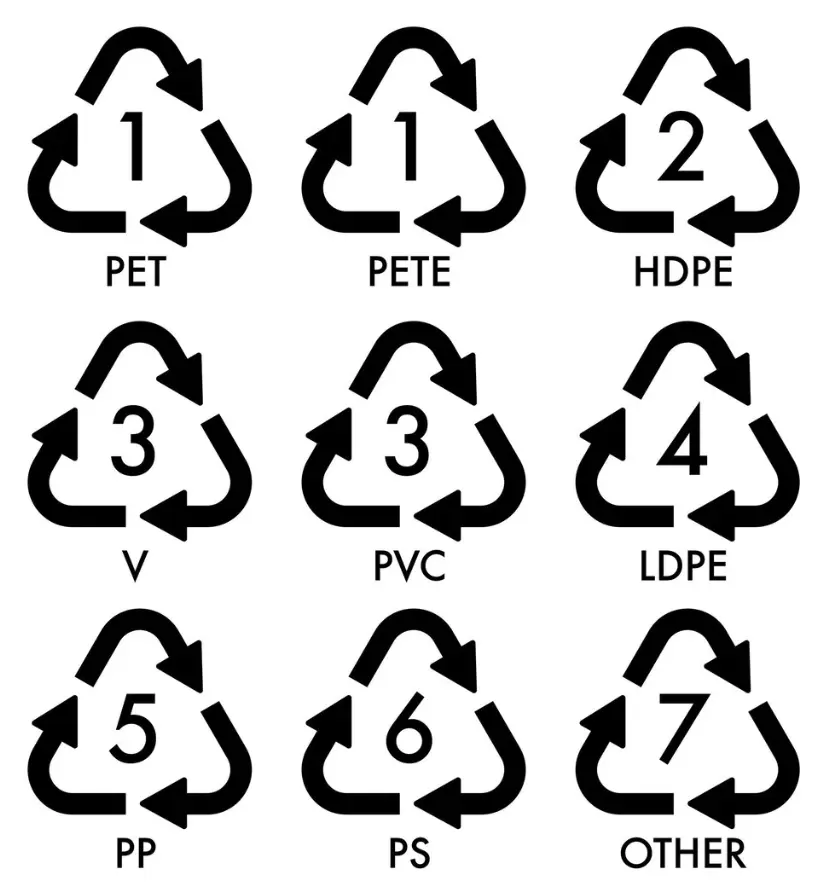
The Mobius Loop is a universally recognized symbol, consisting of three chasing arrows that form a triangle. It signifies that the product or packaging is capable of being recycled. In some instances, you might see a percentage within the loop; this represents the proportion of recycled material present in the product. The presence of the Mobius Loop encourages consumers to recycle the product, supporting circular economies and reducing waste.
The Green Dot
The Green Dot symbol features two interlocking arrows that form a circle, symbolizing the cyclical nature of recycling and recovery processes. It is characterized by its green color, reinforcing its association with environmental efforts and sustainability. The Green Dot symbol is predominantly used in Europe and might be mistaken for a recyclability marker. It indicates that the manufacturer has made a financial contribution towards the recycling and recovery of packaging in Europe. While it doesn’t guarantee that the packaging is recyclable, it signifies the producer’s participation in reducing packaging waste.
Resin Identification Codes
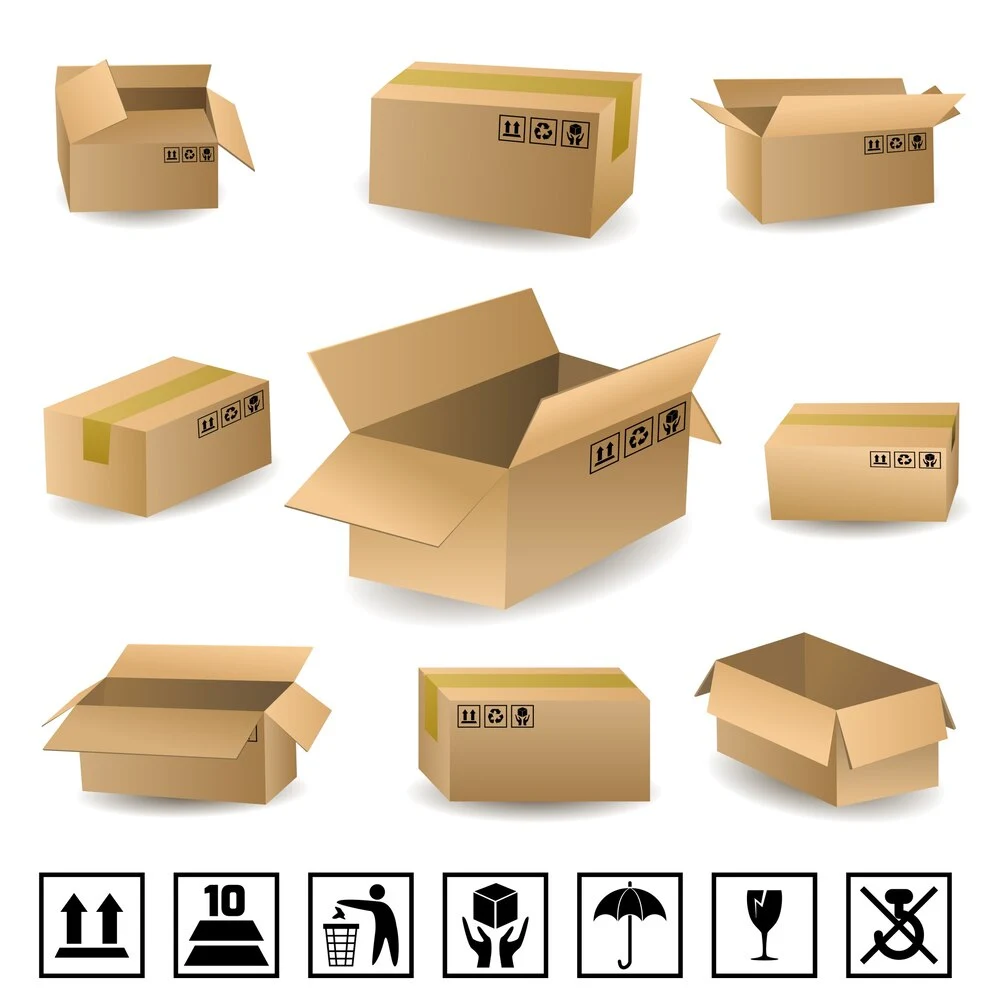
Resin Identification Codes are found mainly on plastic items, featuring a number within a triangle of chasing arrows. These codes classify the type of plastic used, facilitating recycling and reusability:
- PETE/PET (Polyethylene Terephthalate): Commonly used for soft drink bottles, water bottles, and many common food packages.
- HDPE (High-Density Polyethylene): Used for products like milk jugs, detergent bottles, and some plastic bags.
- V or PVC (Polyvinyl Chloride): Found in food wrap, vegetable oil bottles, and blister packaging.
- LDPE (Low-Density Polyethylene): Used for grocery bags, bread bags, and some food wraps.
- PP (Polypropylene): Often used for yogurt containers, syrup bottles, and prescription bottles.
- PS (Polystyrene): Used in disposable coffee cups, plastic cutlery, and packing foam.
- Other: Includes all other plastics not classified in categories 1-6, such as bioplastics, composite materials, and those that do not fit into the first six categories.
As we conclude this comprehensive guide to understanding international packaging symbols meaning, it’s evident that these product packaging symbols are not just cardboard or box packaging symbols; all packaging symbols are a communication tool that transcends language barriers, ensuring safety, sustainability, and compliance across global supply chains. Readers are equipped with the knowledge to interpret symbols related to package handling, sustainability, hazard warnings, and recycling, enhancing their ability to make informed decisions regarding product usage, storage, and disposal.
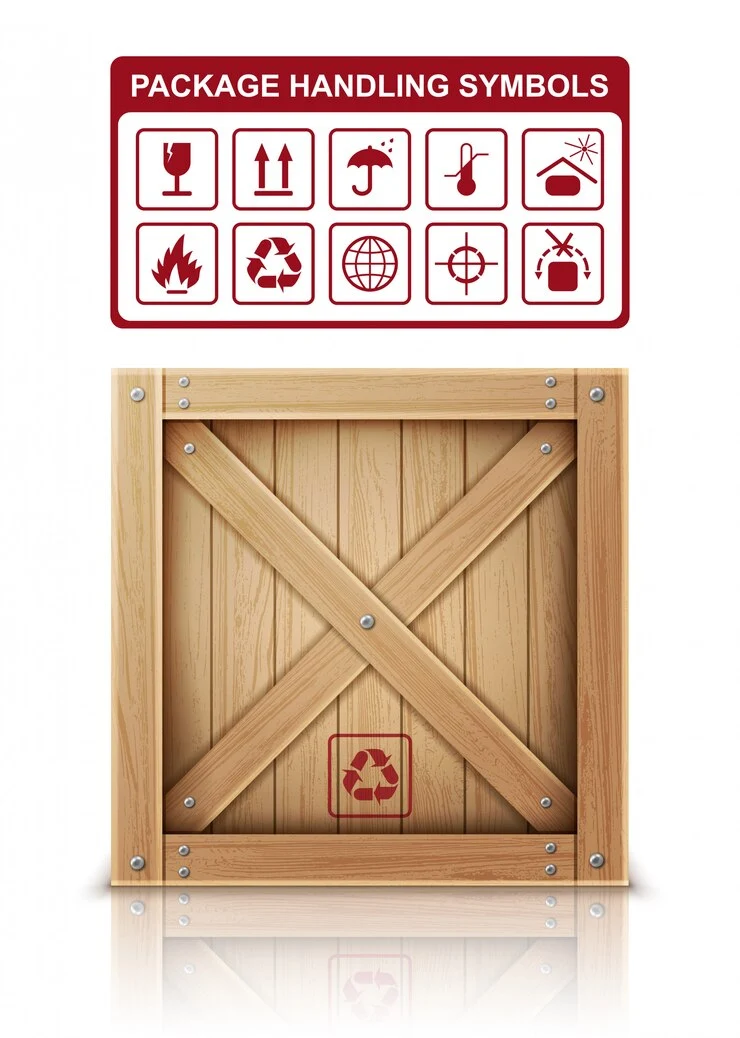
As manufacturers, exporters, consumers, or stakeholders in the global supply chain explore the complex world of international commerce, companies like Lussopack offer the expertise and innovation needed to navigate this landscape effectively. Lussopack, with its focus on luxury, eco-friendly packaging solutions, and direct packaging services, exemplifies how specialized companies enhance the global understanding and implementation of these international packaging symbols. Our dedication to sustainability and quality in all of our packaging choices further underscores the importance of these symbols in contributing to a more sustainable and comprehensively understood global market.
“



